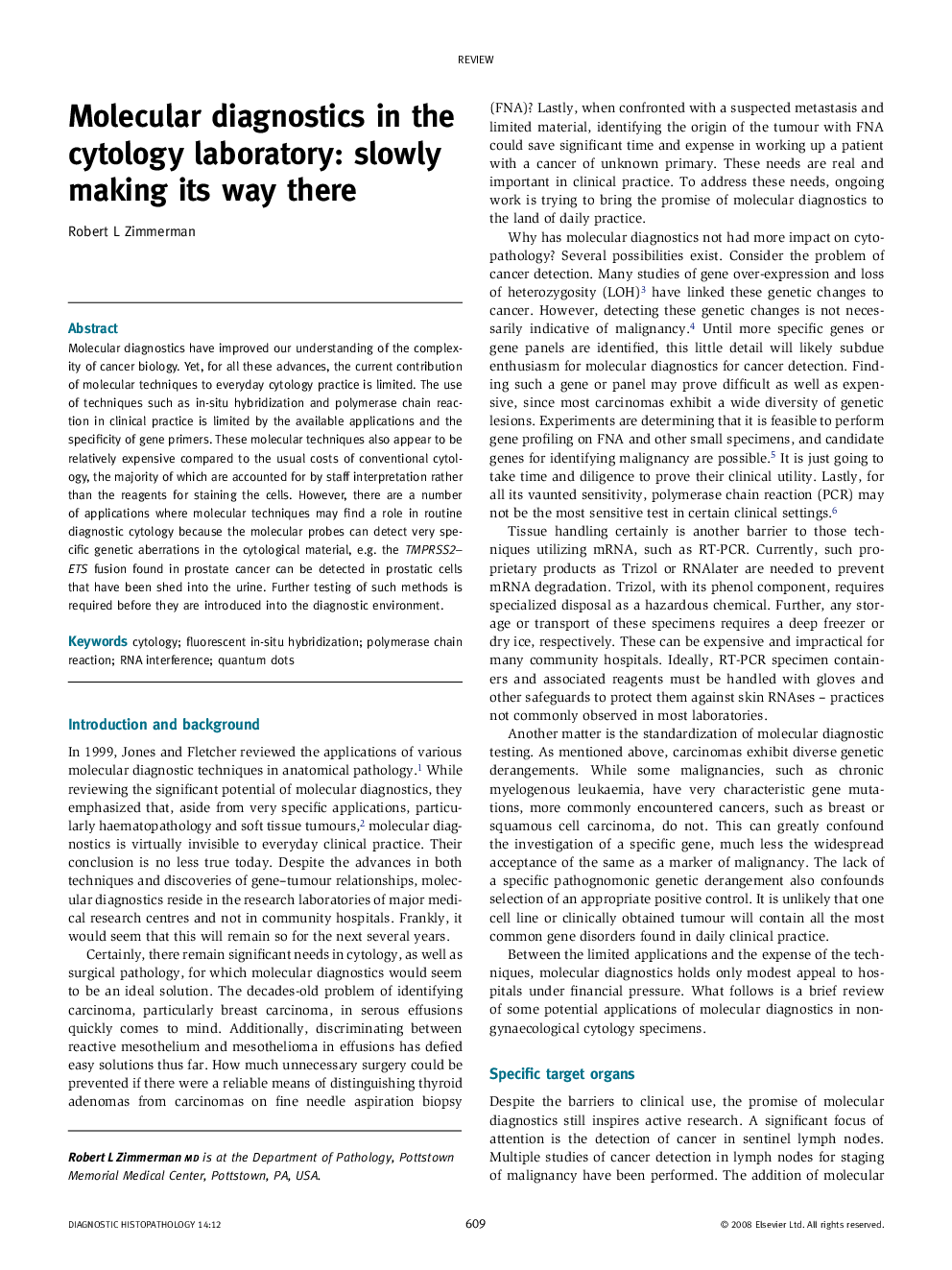| Article ID | Journal | Published Year | Pages | File Type |
|---|---|---|---|---|
| 4131712 | Diagnostic Histopathology | 2008 | 5 Pages |
Molecular diagnostics have improved our understanding of the complexity of cancer biology. Yet, for all these advances, the current contribution of molecular techniques to everyday cytology practice is limited. The use of techniques such as in-situ hybridization and polymerase chain reaction in clinical practice is limited by the available applications and the specificity of gene primers. These molecular techniques also appear to be relatively expensive compared to the usual costs of conventional cytology, the majority of which are accounted for by staff interpretation rather than the reagents for staining the cells. However, there are a number of applications where molecular techniques may find a role in routine diagnostic cytology because the molecular probes can detect very specific genetic aberrations in the cytological material, e.g. the TMPRSS2–ETS fusion found in prostate cancer can be detected in prostatic cells that have been shed into the urine. Further testing of such methods is required before they are introduced into the diagnostic environment.
